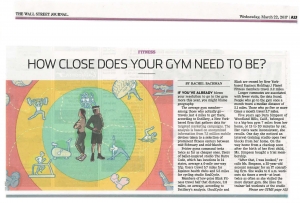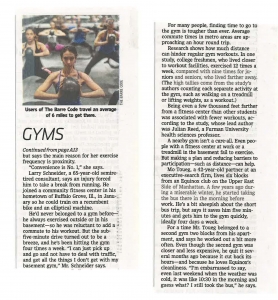By Bill Powell and David Thompson Special to The Enterprise April 15, 2018
“Each day I get five calls from low-income seniors looking to find housing in Davis,” says Susan at Shasta Point Retirement Community. “And each day at least one senior arrives at Shasta Point anxious to get housing and hoping by turning up they may have a better chance than just calling.” They don’t.
Every day there are five to 10 emails or phone calls from low-income seniors to the two staff members at Eleanor Roosevelt Circle. At ERC about three seniors per day walk through the door hoping to get a place. They can’t.
In 2018, there is a waiting list of 441 seniors for the four largest Davis senior communities; Davisville (70), Shasta Point (67), Eleanor Roosevelt Circle (59) and Walnut Terrace (30). In 2017 there were a total of 14 turnovers. Only 14 of the 441 waiting in line got in. At that rate, it would be 31 years before the last of those seniors get housed. The actual wait for an extremely low-income senior can be from three to five years.
It is 16 years since the last affordable senior-housing development was given the go-ahead in Davis. Without citizen approval of the West Davis Active Adult Community, there is no other affordable senior housing community planned for Davis.
When it works
ERC was developed by a partnership of Davis Senior Housing Communities and Neighborhood Partners. The city of Dixon saw the ERC model of housing and social services and asked us to replicate it in Dixon. In a short time, a developer donated 5 acres of land for Heritage Commons to meet their inclusionary requirement.
A first phase of 60 apartments was built. Three years later a second phase of 54 were built and next year another 44 will be built creating a total of 158 apartments. Earlier this year, the city of Woodland approved a 4-plus-acre site for DSHC/NP to build a similar affordable senior campus of about 120 apartments. The senior affordable campus with social services is a very effective way to serve many seniors with a range of needs.
After 33 Community Meetings and 18 Commission Meetings and since July of 2016, Neighborhood Partners in partnership with Davis (Delta) Senior Housing Communities are proposing a state-of-the-art, 150-apartment, senior affordable housing campus at the West Davis Active Adult Community. The location is great, being adjacent to Sutter Hospital, Communicare, medical offices and not far from the Marketplace.
However, at the last minute, some are calling for the affordable land to be divided into two different uses, and that might mean losing up to 75 senior apartments out of the 150. After two years of planning and community review that would scuttle all the work done by Davis Senior Housing Communities to build a 150-apartment senior campus for Davis seniors most in need.
NP and Delta are most grateful to David Taormino and his family for their generous gift of land for affordable senior housing. It all began when David and his wife saw an anguished senior downtown that had missed the last bus to Eleanor Roosevelt Circle and did not know how she would get home. David and his wife gave her a lift and in doing so he learned about the value of ERC for low-income seniors in our community.
When he began thinking of WDAAC, David realized that finally he could do something about that problem. Donating triple the land required land to create an affordable community of 150 apartments with services for seniors is a godsend.
We are facing a tsunami of seniors. And without the WDAAC proposal passing there will be no affordable homes for tomorrow. Sheila Allen, Executive Director of Yolo County Healthy Aging, has shared with us the statistics about the future for Davis seniors. In five years time, when the first phase of DSHC’s senior housing opens its doors at WDAAC there will be over 16,000 seniors in Davis over 55.
Using Eleanor Roosevelt Circle as a laboratory we have learned a great deal. ERC was the first in the region to have a social services coordinator on site to help seniors who benefitted from services and programs. Of the ERC population 25 percent of the seniors are 80 years or older, and 60 percent of our residents have an average income less than $12,100 and are regretfully far below the extremely low-income number. Seniors of that income get immense health benefits from having access to social services.
Cost savings
The DSHC campus at Dixon proved to us that building 150 affordable senior apartments in one senior campus created savings in the construction stage and additional savings later, in the management-and-operation stage. For example, needing to build just one community building creates a savings of about $1 million dollars. With one architect, one set of plans, shared infrastructure and the same builder we gain savings for the second phase.
But, in particular, the critical human value is in having a large enough senior campus to increase the type of services we can provide on site such as social service coordinators and working links to the programs of the county agencies and nonprofits. By having a campus community we can use the very limited resources to serve one of the most at risk populations in Davis. Lonely seniors scattered around Davis are the least likely to be helped and most likely to be neglected.
Robin Affrime of Communicare told us, “that in the last five years the low income senior population using the Davis Clinic has doubled from 3 percent to 6 percent.” More importantly, she recounted, “there is a wave of senior poverty just around the corner, ages 45-64 has risen to being 19 percent of their 26,500 Davis patient visits.”
The Davis City Council will make the final decision next month. If you would like to help us get our 150-affordable senior campus approved, contact Bill Powell at willpowell123@yahoo.com or David Thompson at dthompcoop@aol.com.
Bill Powell is president of Delta Davis Senior Housing Communities and David Thompson is with Neighborhood Partners. The two groups have already developed three local senior communities with a fourth starting construction next year. See our plans for DSHC at WDAAC at https://westdavisactive.com.

 A series of meetings is underway, offering Davis residents insight on an active adult community proposed for West Davis.
A series of meetings is underway, offering Davis residents insight on an active adult community proposed for West Davis.
